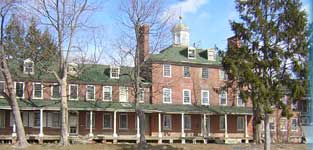Threatened Historic Landmark in PA
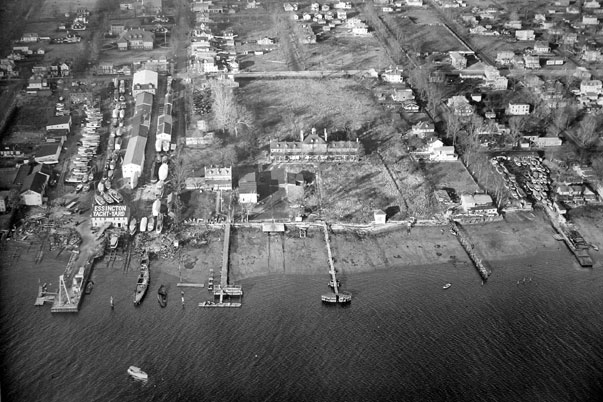
1929 view of Lazaretto from above the Delaware River in Essington, Second Avenue to the Delaware River, Essington, Delaware County, PA
Driving along Interstate 95, near the developed expanse of the Philadelphia International Airport on the east and the swampy marshes of the John Heinz National Wildlife Reserve to the west, most may never realize that one of our nation's most significant historic resources rests alongside the riverfront. Nestled along the banks of the Delaware River, in the small, industrial town of Essington, of Tinicum Township, Pennsylvania, sits one of America's first quarantine stations, the earliest surviving example of a quarantine station on the east coast and perhaps the nation. Commissioned and built by the Pennsylvania Board of Health in 1799, in response to the yellow fever epidemics of the late eighteenth century plaguing Philadelphia, the Lazaretto was strategically placed due south of the city on the banks of the Delaware River to inspect and quarantine all incoming ships, passengers, and cargo attempting to enter Philadelphia and other northern ports along the river. It was there that all immigrants, merchants, and even citizens on incoming ships were required by law to pay a fee and be quarantined for at least a day, and sometimes weeks, in order for the ship to be inspected for sick individuals, infested cargo, or bodies of passengers that had died in transit. If disease or infestation were found, fumigation and sterilization of the ship and its contents would be conducted, the sick would be treated in the hospital onsite, and the healthy would stay in tents or housing on the premises.
Quarantine stations like these were essential at almost every major seaport throughout the nineteenth and early twentieth century. Almost all of these are gone, and the few that remain are either severely deteriorated or date to the turn of the twentieth century. The Lazaretto, in Tinicum Township, remains in remarkably stable condition, with a high degree of integrity, retaining its unique architectural features dating to the turn of the nineteenth century, making it the oldest of its type remaining in the country. Its design and founding concepts made it a prototype, which later quarantines mimicked. It is clearly one of the most important historic structures in not only Delaware County, but also the region. What may be less clear to the casual observer is that the Lazaretto is a historic resource of national, if not international, significance.
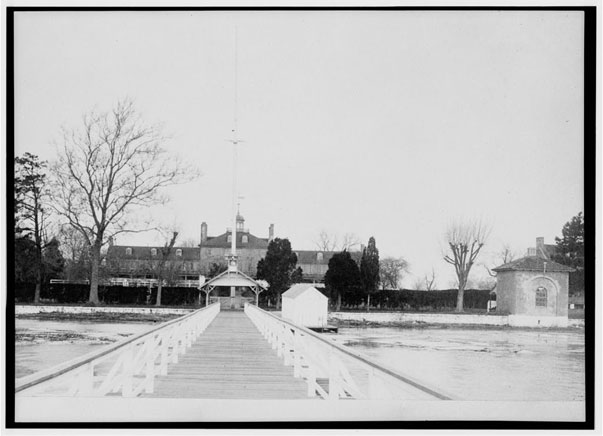
Early photograph of Lazaretto from the river.
Its national significance is enriched, like so many historic sites, by several additional layers of historical significance. Since about 1200 A.D., the area known as Essington in Tinicum Township was inhabited by the Okehocking tribe of the Lenni-Lenape, or Delaware, Indians. Archaeological evidence collected during Printzhof excavations has proven the existence of such Native American inhabitance. Second, there is documentation which suggests that the colony that inhabited the site now known as Governor Printz Park, a state park marking the site of seventeenth-century Swedish settlement and first seat of government in Pennsylvania extended up to the Lazaretto site and therefore has a high potential to yield archeological evidence. Third, after the quarantine station closed in the late nineteenth century, the Main building and outbuildings were used by Philadelphia society's gentlemen as a resort-like country club with views of the Delaware River, a prime getaway for hunting, boating, and socializing. The property was leased to the Philadelphia Athletic Club and renamed the "Orchard Club." Fourth, at the turn of the twentieth century, a few years after the first seaplane flight in 1911, Pennsylvania's first and one of America's first seaplane bases, used during World War I, was established at the Lazaretto, utilizing the buildings and newly-erected corrugated metal hangars on the south lawn. In March 1972, the Main Building and six acres of the property including the Lazaretto was placed on the National Register of Historic Places.
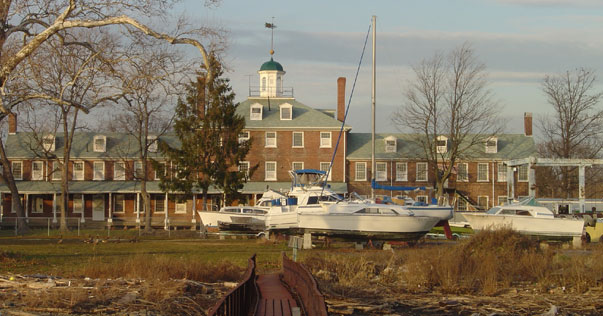
2006 view from the dock at the Delaware River.
Although Tinicum Township is in the process of building a firehouse and community building on the land side of the property, the areas adjacent to the historic structures and the Delaware River side are relatively unaffected. However, the township does not currently have funding allocated for preserving or interpreting the Lazaretto.
Recording Our Past, Providing Benefits Today
HALS was established by the National Park Service in 2000 to document landscapes that serve as tangible evidence of our nation's heritage and development. In general, the program achieves this purpose through written descriptions, measured drawings, and photographs. In addition to chronicling significant and increasingly at-risk landscapes for future generations, HALS provides a wide range of practical uses today. For example: . Battlefield Studies¬?HALS has helped to document the status of and threats to Revolutionary and Civil War battlefields.
- National Cemetery Inventories — HALS has produced detailed inventories of a growing number of national cemeteries and is developing interactive systems to make information more accessible to the public.
- Hurricane Katrina Response — Following Hurricane Katrina, HALS staff provided FEMA and state and local officials with maps that guided bulldozers and other heavy equipment around and through historic districts during the massive cleanup process.
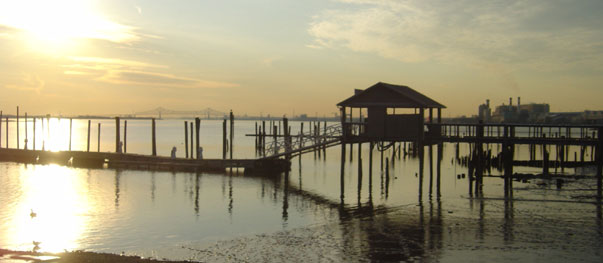
Delaware River sunset from Lazaretto, 2006
Position of the American Society of Landscape Architects (ASLA)
HALS has established an impressive track record with one full-time staff person and by piecing together a limited budget from other National Park Service accounts. Unfortunately, nationally significant landscapes are disappearing or are being altered at a rate that far exceeds the capabilities of the existing program to respond. Without additional resources, HALS cannot provide technical or financial assistance to local groups, ASLA state chapters, and historical associations interested in developing and completing projects in or near their communities. ASLA requests $1.2 million to support HALS in the fiscal year 2008 Interior Appropriations bill. This appropriation would support core staff, including landscape architects, historians, and geographic information systems (GIS) specialists, as well as allow the program to provide technical assistance and small seed grants to local groups. With this support, citizens can initiate and complete HALS projects and help document nationally significant landscapes.
For more information about historic landscapes in our state or the HALS program, please contact:
William F. Menke, ASLA HALS PA Liaison
6 Ogden Avenue
610 328-6948
wmenke@menkeandmenke.com
Information above partly derived from:
Sell, Rebecca H. The Lazaretto: The Cultural Significance and Preservation Plan in the Spirit of the Burra Charter. A Thesis in Historic Preservation, Master of Science in Historic Preservation, University of Pennsylvania, 2005.
